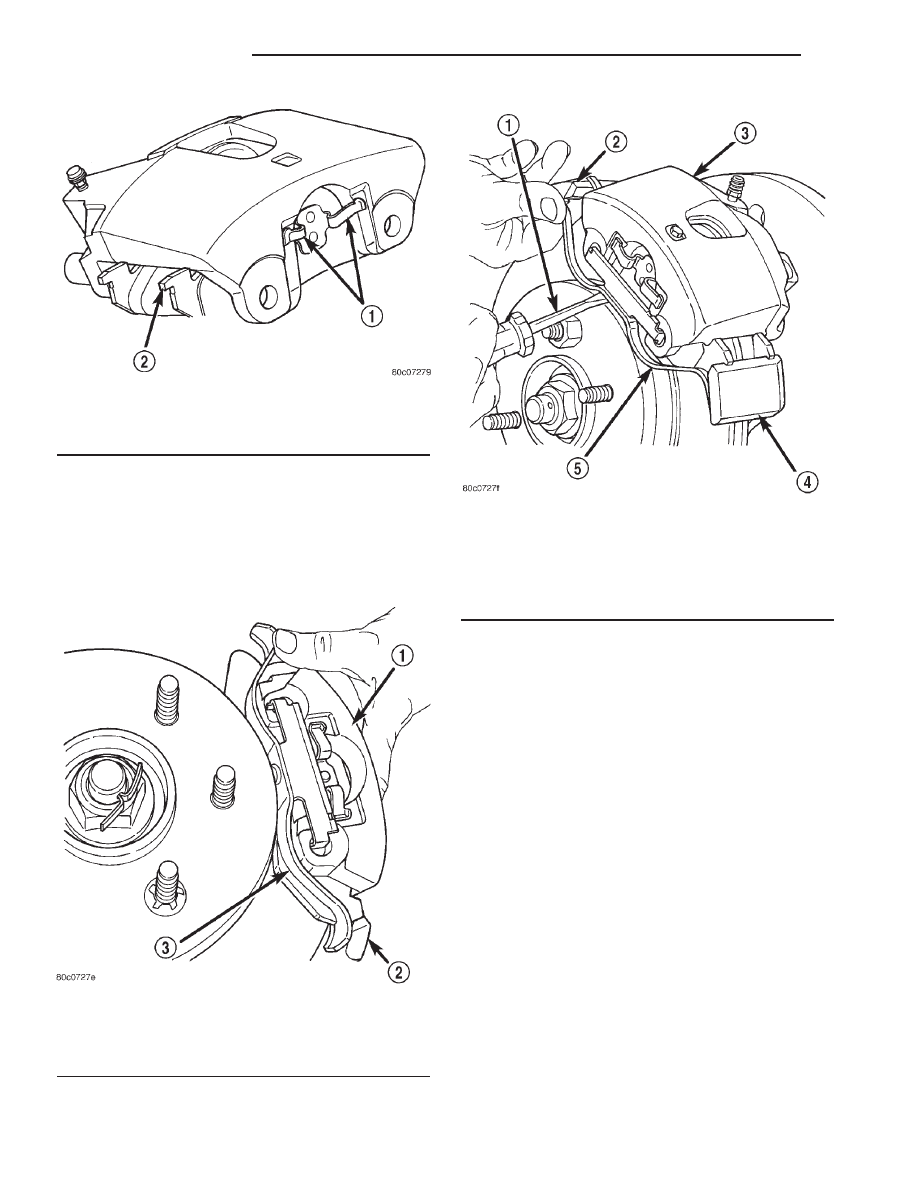Dodge Dakota (R1). Manual - part 234

the spring (Fig. 13) and hold the end under the
adapter. With a screw driver pry up on the spring
(Fig. 14) to seat the spring into the other caliper
hole.
NOTE: Verify the spring is seated properly into the
caliper holes.
(9) Install wheel and tire assembly. (Refer to 22 -
TIRES/WHEELS/WHEELS - STANDARD PROCE-
DURE).
(10) Remove support and lower vehicle.
(11) Pump brake pedal to seat brake shoes.
(12) Fill brake fluid reservoir.
(13) Verify a firm brake pedal before moving vehi-
cle.
COMBINATION VALVE
DESCRIPTION
The combination valve contains a pressure differ-
ential valve and switch and a rear brake proportion-
ing valve. The valve is not repairable and must be
replaced as an assembly if diagnosis indicates this is
necessary.
OPERATION
PRESSURE DIFFERENTIAL VALVE
The pressure differential switch is connected to the
brake warning light. The switch is actuated by move-
ment of the switch valve. The switch monitors fluid
pressure in the separate front/rear brake hydraulic
circuits.
Fig. 12 Outboard Shoe Retainer Spring
1 - SEAT RETAINER SPRING ENDS IN CALIPER
2 - OUTBOARD SHOE
Fig. 13 Caliper Spring
1 - CALIPER
2 - ADAPTER
3 - CALIPER SPRING
Fig. 14 Seat Caliper Spring
1 - SCREWDRIVER
2 - ADAPTER
3 - CALIPER
4 - ADAPTER
5 - CALIPER SPRING
5 - 12
BRAKES - BASE
AN
BRAKE PADS/SHOES (Continued)